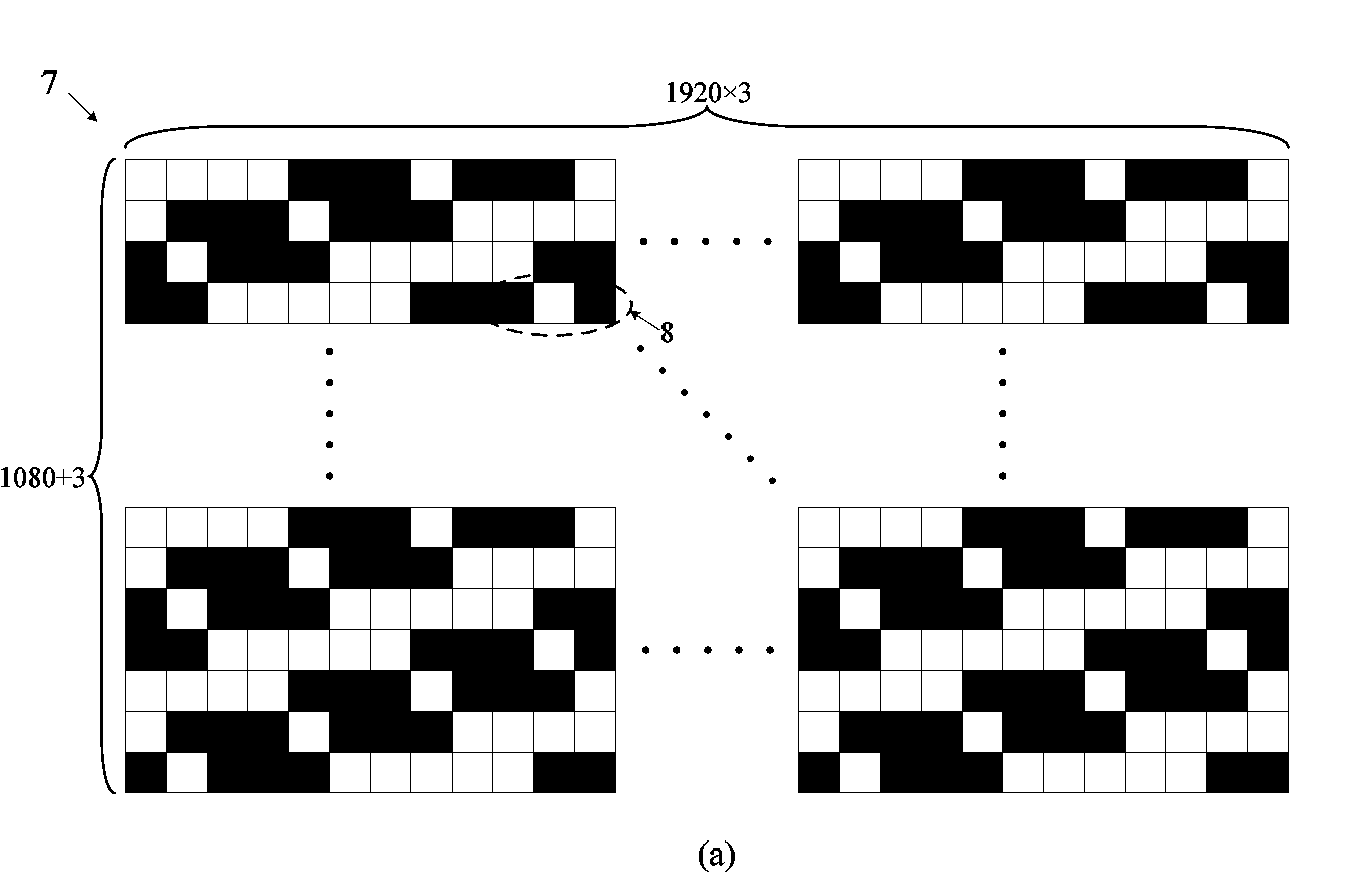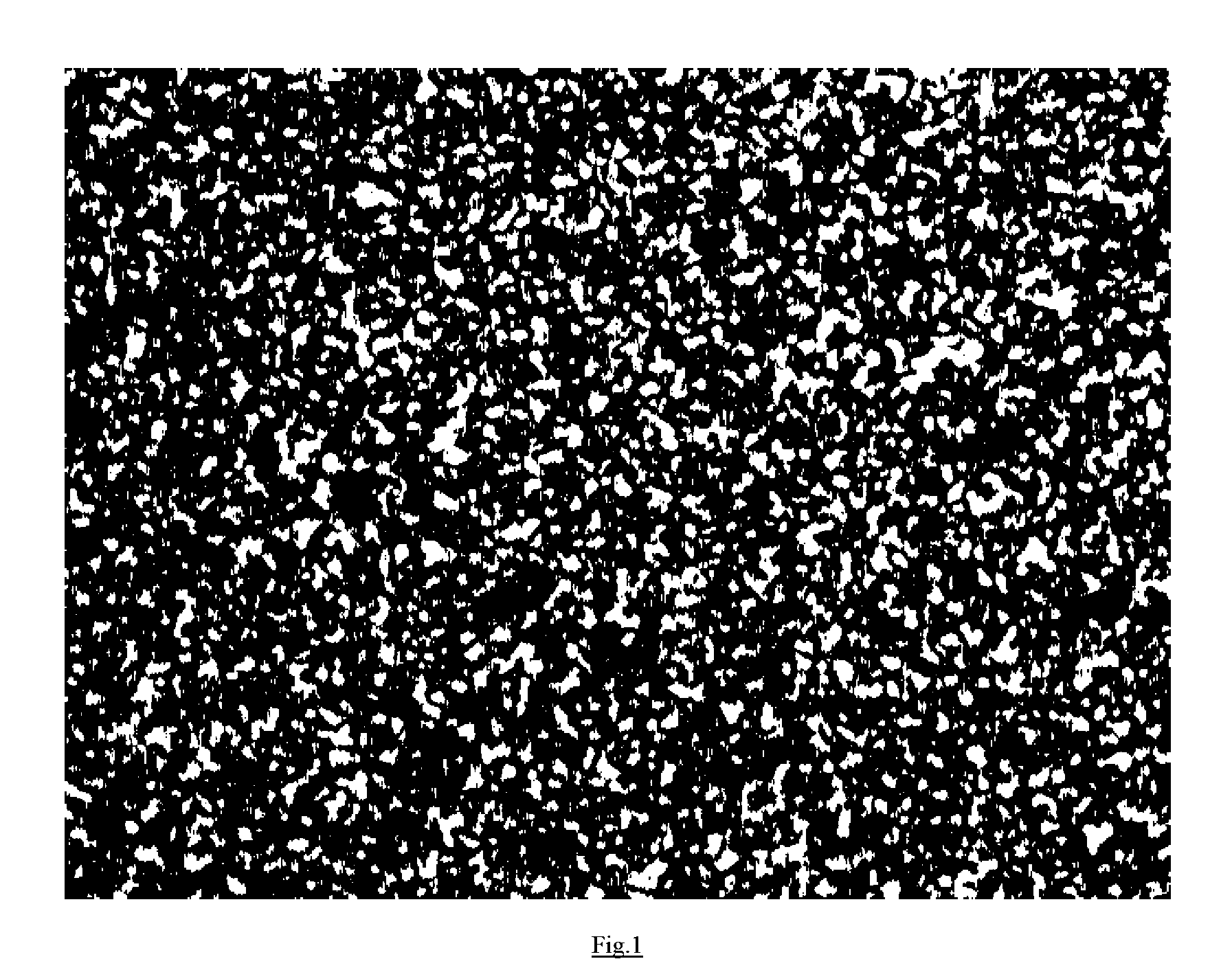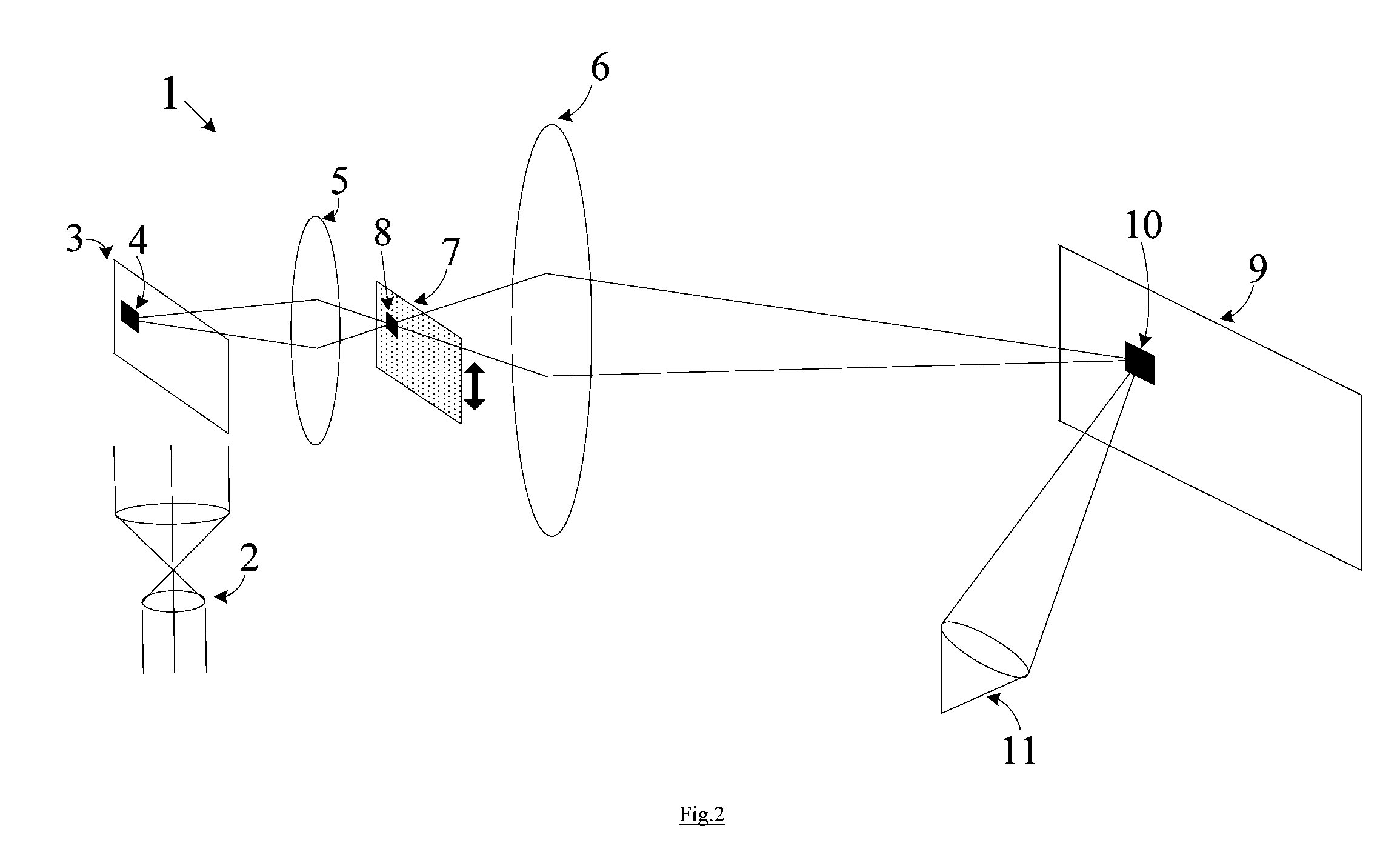Speckle reduction
a technology of specks and specks, applied in the field of speck reduction, can solve the problems of inability to achieve very practical techniques, inability to induce specks, and inability to add these various scattered components with relative delays
- Summary
- Abstract
- Description
- Claims
- Application Information
AI Technical Summary
Benefits of technology
Problems solved by technology
Method used
Image
Examples
Embodiment Construction
FIG. 1 shows a speckle pattern generated from a coherent source of radiation, such as light from a laser, scattering off a rough surface. The dark regions correspond with destructive interference and the bright spots correspond with constructive interference effects.
FIG. 2 shows a display system 1 that includes a phase diffuser at an intermediate image plane of a projection lens 5, 6 (acting as a beam expander). The display system 1 shown in FIG. 2 may include a laser source 2, a digital micromirror device (DMD) 3, which acts as a light modulator, a screen 9 and a detector 11. The phase diffuser or speckle reduction mask 7 may be in the form of a binary phase mask in configured as an orthogonal array (OA) having parameters N1, N2, s and t, where N1 represents runs, N2 represents factors, s represents levels and t represents strength. When a monochromatic laser is expanded and illuminated at the DMD chip 3, a full frame monochromatic image may be formed on the phase diffuser or speck...
PUM
| Property | Measurement | Unit |
|---|---|---|
| angle | aaaaa | aaaaa |
| angle | aaaaa | aaaaa |
| angle | aaaaa | aaaaa |
Abstract
Description
Claims
Application Information
 Login to View More
Login to View More - R&D
- Intellectual Property
- Life Sciences
- Materials
- Tech Scout
- Unparalleled Data Quality
- Higher Quality Content
- 60% Fewer Hallucinations
Browse by: Latest US Patents, China's latest patents, Technical Efficacy Thesaurus, Application Domain, Technology Topic, Popular Technical Reports.
© 2025 PatSnap. All rights reserved.Legal|Privacy policy|Modern Slavery Act Transparency Statement|Sitemap|About US| Contact US: help@patsnap.com



